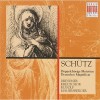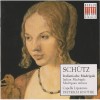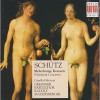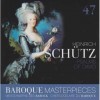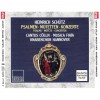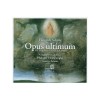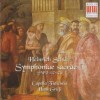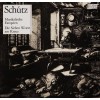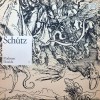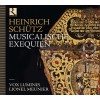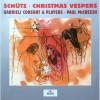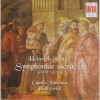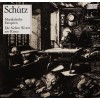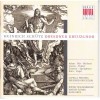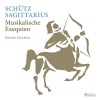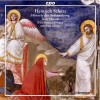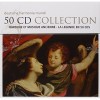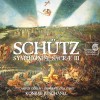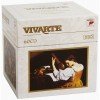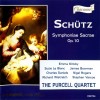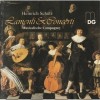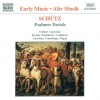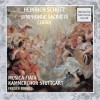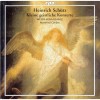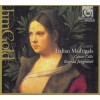Composers
Heinrich Schütz (18 October 1585 GC – 16 November 1672) was a German composer and organist, generally regarded as the most important German composer before Johann Sebastian Bach and often considered to be one of the most important composers of the 17th century along with Claudio Monteverdi. He wrote what is traditionally considered to be the first German opera, Dafne (Opitz-Schütz), performed at Torgau in 1627, the music of which has since been lost. He is commemorated as a musician in the Calendar of Saints of the Lutheran Church on 28 July with Johann Sebastian Bach and George Frideric Handel. He was buried in the Dresden Frauenkirche but his tomb has been destroyed.
He was born in Köstritz, the eldest son of Christoph Schütz and Euphrosyne Bieger. In 1590 the family moved to Weißenfels, where his father Christoph managed the inn "Zum Ring". When Schütz lived with his parents, his musical talents were discovered by Moritz von Hessen-Kassel in 1599. After being a choir-boy he went on to study law at Marburg before going to Venice from 1609–1612 to study music with Giovanni Gabrieli. Gabrieli is the only person Schütz ever referred to as being his teacher. He also inherited a ring from Gabrieli shortly before the latter's death. He subsequently had a short stint as organist at Kassel before moving to Dresden in 1615 to work as court composer to the Elector of Saxony. In 1619 Schütz married Magdalena Wildeck who had been born in 1601. She bore two daughters before her death in 1625: Anna Justina born in 1621 and Euphrosyne born in 1623.
In Dresden Schutz sowed the seeds of what is now the Sächsische Staatskapelle Dresden, but left there on several occasions; in 1628 he went to Venice again, where he met and studied with Claudio Monteverdi. In 1633 he was invited to Copenhagen to compose the music for wedding festivities there, eventually returning to Dresden in 1635. He again conducted an extended visit to Denmark in 1641. In 1655, the year that his daughter Euphrosyne died, he accepted an ex officio post as Kapellmeister at Wolfenbüttel.
Schutz died in Dresden from a stroke in 1672 at the age of 87.[1]
His pupils included Anton Colander, Christoph Bernhard, Matthias Weckmann, Heinrich Albert, Johann Theile, Friedrich Werner, Philipp Stolle Johann Nauwach, Caspar Kittel, Christoph Kittel, Clemens Thieme, Johann Klemm, Johann Vierdanck, David Pohle, Constantin Christian Dedekind, Johann Jakob Loewe (or Löwe), Johann Kaspar Horn, Friedrich von Westhoff, Adam Krieger, Johann Wilhelm Furchheim, Carlo Farina.
Schütz's compositions show the influence of his teacher Gabrieli (displayed most notably with Schütz's use of resplendent polychoral and concertato styles) and of Monteverdi. Additionally, the influence of the Netherlandish composers of the 16th century is prominent in his work. His best known works are in the field of sacred music, ranging from solo voice with instrumental accompaniment to a cappella choral music. Representative works include his three books of Symphoniae sacrae, the Psalms of David (Psalmen Davids), the Sieben Worte Jesu Christi am Kreuz (the Seven Last Words on the Cross) and his three Passion settings. Schütz's music, while starting off in the most progressive styles early in his career, eventually grew into a style that is simple and almost austere, culminating with his late Passion settings. Practical considerations were certainly responsible for part of this change: the Thirty Years' War had devastated the musical infrastructure of Germany, and it was no longer practical or even possible to put on the gigantic works in the Venetian style which marked his earlier period.
The unique composition "Es steh Gott auf" (SWV 356) is in many respects comparable to Monteverdi.[4]
Schütz was one of the last composers to write in a modal style. His harmonies often result from the contrapuntal alignment of voices rather than from any sense of "harmonic motion"; contrastingly, much of his music shows a strong tonal pull when approaching cadences. His music includes a great deal of imitation, but structured in such a way that the successive voices do not necessarily enter after the same number of beats or at predictable intervallic distances. Schütz's writing often includes intense dissonances caused by the contrapuntal motion of voices moving in correct individual linear motion, but resulting in startling harmonic tension. Above all, his music displays extreme sensitivity to the accents and meaning of the text, which is often conveyed using special technical figures drawn from musica poetica, themselves drawn from or created in analogy to the verbal figures of classical rhetoric.
Almost no secular music by Schütz has survived, save for a few domestic songs (arien) and no purely instrumental music at all (unless one counts the short instrumental movement entitled "sinfonia" that encloses the dialogue of Die sieben Worte), even though he had a reputation as one of the finest organists in Germany.
Schütz was of great importance in bringing new musical ideas to Germany from Italy, and as such had a large influence on the German music which was to follow. The style of the North German organ school derives largely from Schütz (as well as from the Dutchman Jan Pieterszoon Sweelinck); a century later this music was to culminate in the work of J.S. Bach. After Bach, the most important composer to be influenced by Schütz was Brahms, who is known to have studied his works.
Recently Added
Biography
Heinrich Schütz (18 October 1585 GC – 16 November 1672) was a German composer and organist, generally regarded as the most important German composer before Johann Sebastian Bach and often considered to be one of the most important composers of the 17th century along with Claudio Monteverdi. He wrote what is traditionally considered to be the first German opera, Dafne (Opitz-Schütz), performed at Torgau in 1627, the music of which has since been lost. He is commemorated as a musician in the Calendar of Saints of the Lutheran Church on 28 July with Johann Sebastian Bach and George Frideric Handel. He was buried in the Dresden Frauenkirche but his tomb has been destroyed.
He was born in Köstritz, the eldest son of Christoph Schütz and Euphrosyne Bieger. In 1590 the family moved to Weißenfels, where his father Christoph managed the inn "Zum Ring". When Schütz lived with his parents, his musical talents were discovered by Moritz von Hessen-Kassel in 1599. After being a choir-boy he went on to study law at Marburg before going to Venice from 1609–1612 to study music with Giovanni Gabrieli. Gabrieli is the only person Schütz ever referred to as being his teacher. He also inherited a ring from Gabrieli shortly before the latter's death. He subsequently had a short stint as organist at Kassel before moving to Dresden in 1615 to work as court composer to the Elector of Saxony. In 1619 Schütz married Magdalena Wildeck who had been born in 1601. She bore two daughters before her death in 1625: Anna Justina born in 1621 and Euphrosyne born in 1623.
In Dresden Schutz sowed the seeds of what is now the Sächsische Staatskapelle Dresden, but left there on several occasions; in 1628 he went to Venice again, where he met and studied with Claudio Monteverdi. In 1633 he was invited to Copenhagen to compose the music for wedding festivities there, eventually returning to Dresden in 1635. He again conducted an extended visit to Denmark in 1641. In 1655, the year that his daughter Euphrosyne died, he accepted an ex officio post as Kapellmeister at Wolfenbüttel.
Schutz died in Dresden from a stroke in 1672 at the age of 87.[1]
His pupils included Anton Colander, Christoph Bernhard, Matthias Weckmann, Heinrich Albert, Johann Theile, Friedrich Werner, Philipp Stolle Johann Nauwach, Caspar Kittel, Christoph Kittel, Clemens Thieme, Johann Klemm, Johann Vierdanck, David Pohle, Constantin Christian Dedekind, Johann Jakob Loewe (or Löwe), Johann Kaspar Horn, Friedrich von Westhoff, Adam Krieger, Johann Wilhelm Furchheim, Carlo Farina.
Schütz's compositions show the influence of his teacher Gabrieli (displayed most notably with Schütz's use of resplendent polychoral and concertato styles) and of Monteverdi. Additionally, the influence of the Netherlandish composers of the 16th century is prominent in his work. His best known works are in the field of sacred music, ranging from solo voice with instrumental accompaniment to a cappella choral music. Representative works include his three books of Symphoniae sacrae, the Psalms of David (Psalmen Davids), the Sieben Worte Jesu Christi am Kreuz (the Seven Last Words on the Cross) and his three Passion settings. Schütz's music, while starting off in the most progressive styles early in his career, eventually grew into a style that is simple and almost austere, culminating with his late Passion settings. Practical considerations were certainly responsible for part of this change: the Thirty Years' War had devastated the musical infrastructure of Germany, and it was no longer practical or even possible to put on the gigantic works in the Venetian style which marked his earlier period.
The unique composition "Es steh Gott auf" (SWV 356) is in many respects comparable to Monteverdi.[4]
Schütz was one of the last composers to write in a modal style. His harmonies often result from the contrapuntal alignment of voices rather than from any sense of "harmonic motion"; contrastingly, much of his music shows a strong tonal pull when approaching cadences. His music includes a great deal of imitation, but structured in such a way that the successive voices do not necessarily enter after the same number of beats or at predictable intervallic distances. Schütz's writing often includes intense dissonances caused by the contrapuntal motion of voices moving in correct individual linear motion, but resulting in startling harmonic tension. Above all, his music displays extreme sensitivity to the accents and meaning of the text, which is often conveyed using special technical figures drawn from musica poetica, themselves drawn from or created in analogy to the verbal figures of classical rhetoric.
Almost no secular music by Schütz has survived, save for a few domestic songs (arien) and no purely instrumental music at all (unless one counts the short instrumental movement entitled "sinfonia" that encloses the dialogue of Die sieben Worte), even though he had a reputation as one of the finest organists in Germany.
Schütz was of great importance in bringing new musical ideas to Germany from Italy, and as such had a large influence on the German music which was to follow. The style of the North German organ school derives largely from Schütz (as well as from the Dutchman Jan Pieterszoon Sweelinck); a century later this music was to culminate in the work of J.S. Bach. After Bach, the most important composer to be influenced by Schütz was Brahms, who is known to have studied his works.
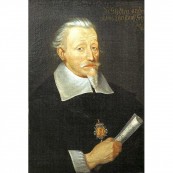

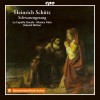
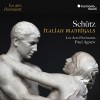
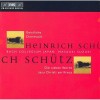
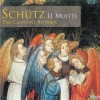
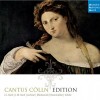
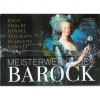
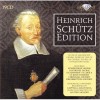
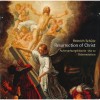
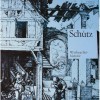
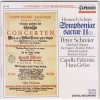
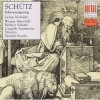


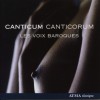
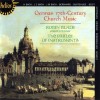
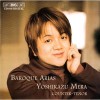

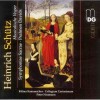
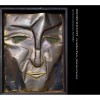
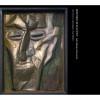
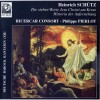
![H. Schütz - Musikalische Exequien, Motets [La Chapelle Royale, P. Herreweghe]](http://static.classicalm.com/repository/composition-cover/small/27152-img1461921013644493.jpg)
